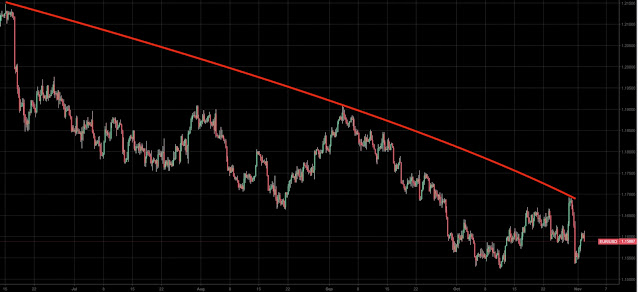The EUR/USD has already fallen 4.5% since June 2021. Moreover, as seen on the chart below, the trend is very slightly accelerating, which means that EUR/USD exchange rate may still be off-balance due to last year's huge, unexpected spike.
 |
| EUR/USD June - October 2021 |
1. Admittedly, the inflation rate in the Euro Area is lower than in the US (4.10% vs. 5.40%), but looking at historical data, inflation has never had any serious impact on the exchange rate. Also, the 5.4% level in the US has remained steady since June this year, while in Euro Area we have just seen the dynamic growth from 3.4% in September to 4.1% in October.
2. The US year-on-year GDP growth remains higher (4.90% vs. 3.70%).
3. The key US interest rate is also higher (0.25% vs. 0%), the US interbank rate is 0.13% vs. -0.56% in the Eurozone.
Demography and forex rates - is there a link?
4. The US unemployment remains significantly lower (4.80% vs 7.50%).
5. On top of this, the Fed stopped printing money faster than the ECB. At the moment, the European Central Bank asset expansion seems to be even more dynamic - as seen on the chart below (blue is for the US, red is for the Euro Area).
To sum up, it is difficult to find any reasons for the EUR/USD exchange rate growth in the nearest future. The bearish trend will very likely continue throughout this year's fall. Data credits: Board of Governors of the Federal Reserve System (US), Assets: Total Assets: Total Assets (Less Eliminations from Consolidation): Wednesday Level [WALCL], retrieved from FRED, Federal Reserve Bank of St. Louis; https://fred.stlouisfed.org/series/WALCL, November 2, 2021.European Central Bank, Central Bank Assets for Euro Area (11-19 Countries) [ECBASSETSW], retrieved from FRED, Federal Reserve Bank of St. Louis; https://fred.stlouisfed.org/series/ECBASSETSW, November 2, 2021.

